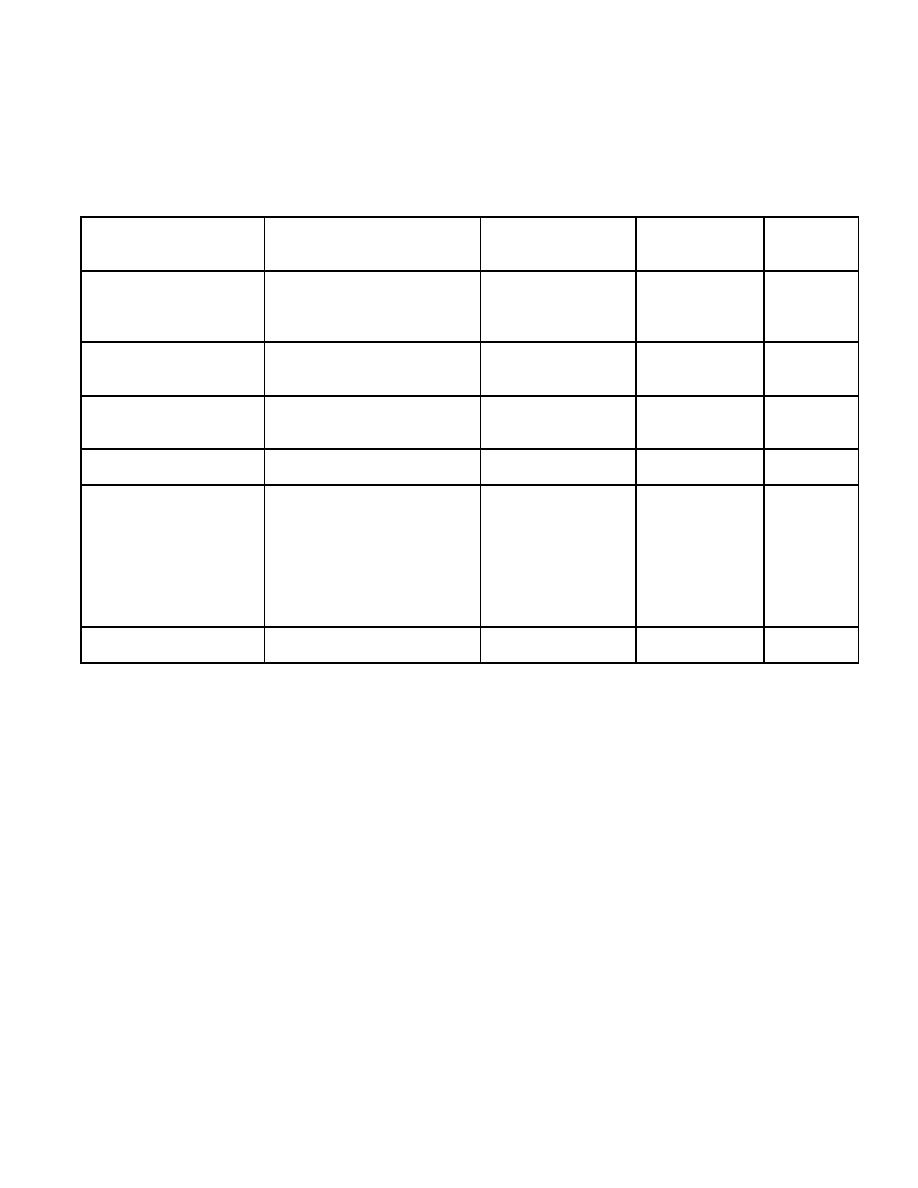
Table F-3
Liquefaction remediation measures (National Research Council, 1985; Ferritto,
1997b).
Maximum
Most Suitable Soil
Relative
Method
Principle
Effective
Conditions/Types
Cost
Treatment Depth
12. Electrokinetic injection
Stabilizing chemicals move into
Saturated sands, silts,
Unknown
High
and fill soil pores by electro-
silty clays.
osmosis or colloids into pores by
electro-phoresis.
13. Jet grouting
High-speed jets at depth excavate,
Sands, silts, clays.
Unknown
High
inject, and mix a stabilizer with
soil to form columns or panels.
14. Mix-in-place piles and
Lime, cement, or asphalt
Sand, silts, clays, all
>20 m
High
walls
introduced through rotating auger
soft or loose inorganic
(60 m obtained in
or special in-place mixer.
soils.
Japan)
15. In-situ vitrification
Melts soil in place to create an
All soils and rock.
>30 m
Moderate
obsidian-like vitreous material.
Sands, silts, clays.
>30 m
Moderate
Hole jetted into fine-grained soil
16. Vibro-replacement
(limited by
stone and sand
and backfilled with densely
vibratory
compacted gravel or sand hole
columns
equipment)
a. Grouted
formed in cohesionless soils by
vibro techniques and compaction
b. Not grouted
of backfilled gravel or sand. For
grouted columns, voids filled with
a grout.
17. Root piles, soil nailing
Small-diameter inclusions used to
All soils.
Unknown
Moderate to
carry tension, shear, compression.
high
F-38



 Previous Page
Previous Page
